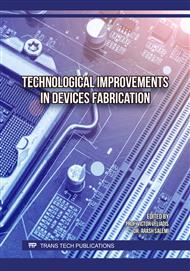p.21
p.31
p.37
p.45
p.55
p.61
p.67
p.73
p.81
Damage Evaluation and Elemental Analysis of SiC Wafers Processed by Water Jet Guided Laser
Abstract:
Low-process damage dicing technologies are required to improve the reliability of silicon carbide (SiC) devices. Existing methods, such as ultrasonic diamond blade dicing, dry laser dicing, and stealth dicing, introduce mechanical or thermal stresses that lead to cracks and dislocations, including basal plane dislocations (BPDs), which degrade device quality. In this study, we assess the crystalline defects induced by water jet guided laser (WGL) processing on a SiC wafer using X-ray topography (XRT) and investigate the underlying processing mechanisms through Energy Dispersive X-ray Spectroscopy (EDX). The asymmetric contrast observed along the processed grooves in the XRT images was due to the X-ray irradiation direction, and no significant BPD formation was observed. The EDX results showed that the processed surface was oxidized by laser ablation. Thus, WGL processing can provide damage-free dicing of SiC wafers with minimal mechanical stress and defects.
Info:
Periodical:
Pages:
55-59
Citation:
Online since:
September 2025
Permissions:
Share:
Citation:


